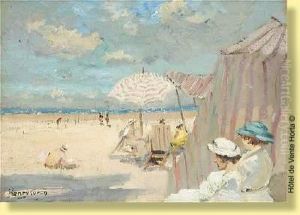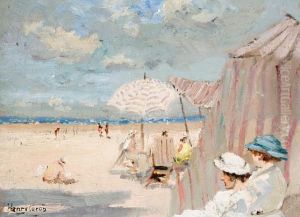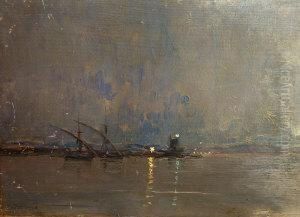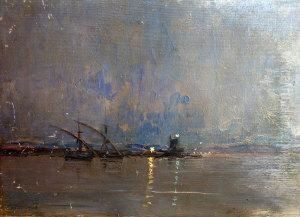Henri Paul Edmond Caron Paintings
Henri Paul Edmond Caron was a French artist known for his contributions to the world of sculpture. Born on August 14, 1849, in the city of Paris, France, Caron grew up during a period of artistic vibrancy that would later be known as the Belle Époque. This era, characterized by optimism, regional peace, economic prosperity, and technological, scientific, and cultural innovations, had a significant influence on the development of his artistic style and preferences.
Caron was educated in the fine arts at the École des Beaux-Arts in Paris, which was the preeminent art school in France. During his time at the École, he was influenced by the academic art movement, which emphasized traditional forms and the importance of drawing in the development of an artist's skill. He was trained under prominent sculptors of the time, which allowed him to refine his technical skills and aesthetic judgment.
While Caron's work may not be as well-known as some of his contemporaries, he contributed to the rich tapestry of French sculpture in the late 19th and early 20th centuries. His oeuvre included both public commissions and private works, ranging from decorative pieces to more substantial public monuments. Caron's style was characterized by attention to detail, balanced composition, and a blend of classical elegance with a touch of modernity.
Despite his talent and the quality of his work, Caron did not achieve the same level of fame as some of his peers, such as Auguste Rodin. However, his sculptures can still be found in various collections, and they stand as a testament to the skill and artistry of sculptors of his era.
Henri Paul Edmond Caron passed away on April 13, 1909, in Paris. His legacy, though not widely recognized in popular narratives of art history, is preserved in the pieces that survive him and in the annals of French cultural history, where he is noted for his contribution to the sculptural arts during a dynamic period of European art history.



